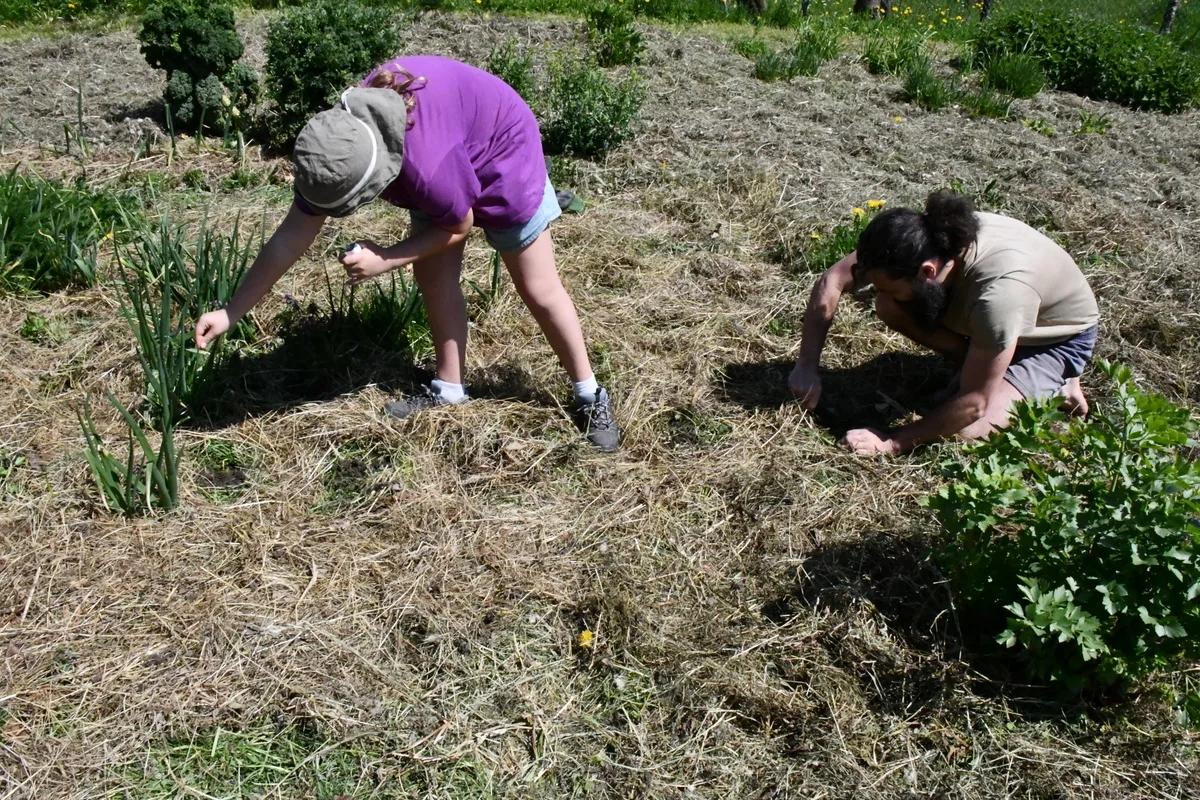
If this is your first year of no-dig gardening, congratulations! You are well on your way to less work and more abundant harvests.
While this page you are currently on will be helpful in terms of spring garden chores to do in your no-dig garden, its main objective is to assist gardens, and gardeners, who are past their first growing season. So, seasoned gardeners, get ready for your best garden ever.
First-timers, start with this article: 6 Reasons To Start A No Dig Garden + How To Get Started, then come back to read some more on the subject.
After all, it’s time that your garden stops looking like the one below.
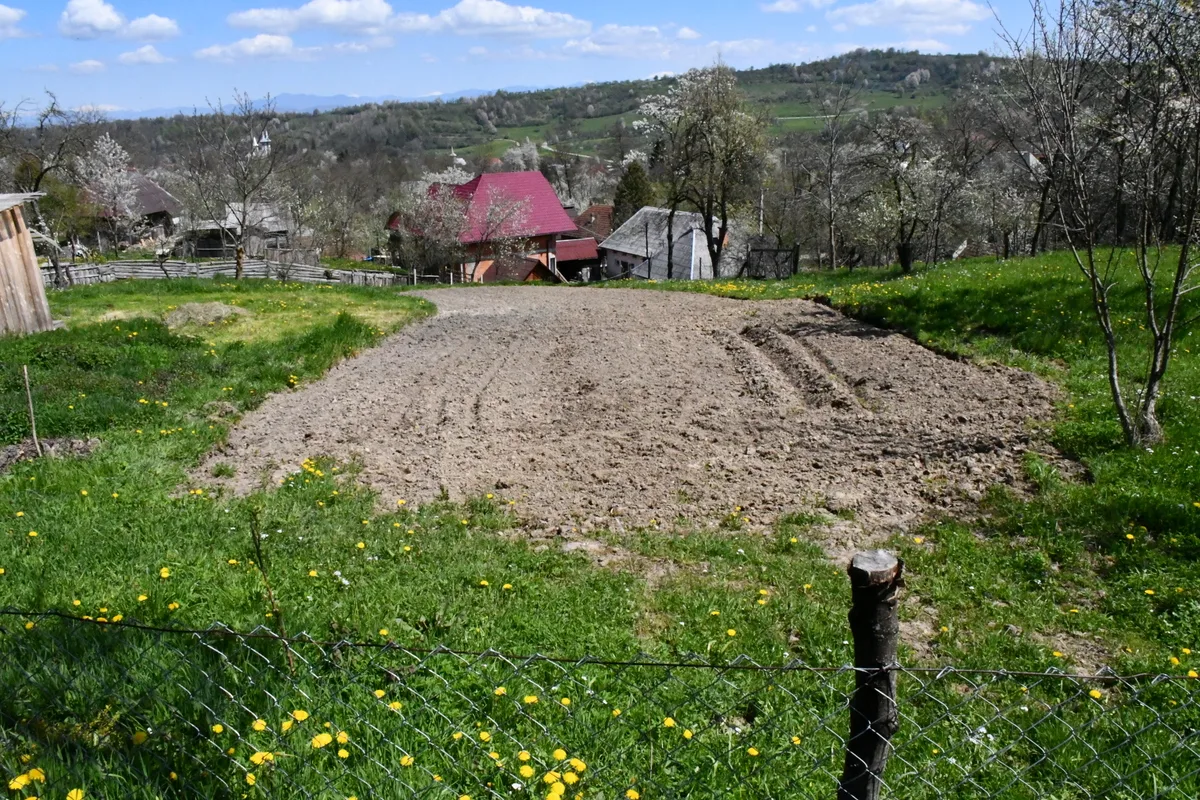
As soon as the weather starts to warm up in spring, you’ll be eager to get out in the garden and sow some seeds. Take heed of my first advice to save some disappointment. Planting too early is almost never a good plan. Naturally, this depends on the climate you are gardening in, but here, April snows are random and sometimes they are followed by weeks of rain.
The first garden chore for your no-dig garden is to stand by and hold back from rushing in.
1. Wait, Wait and Wait.
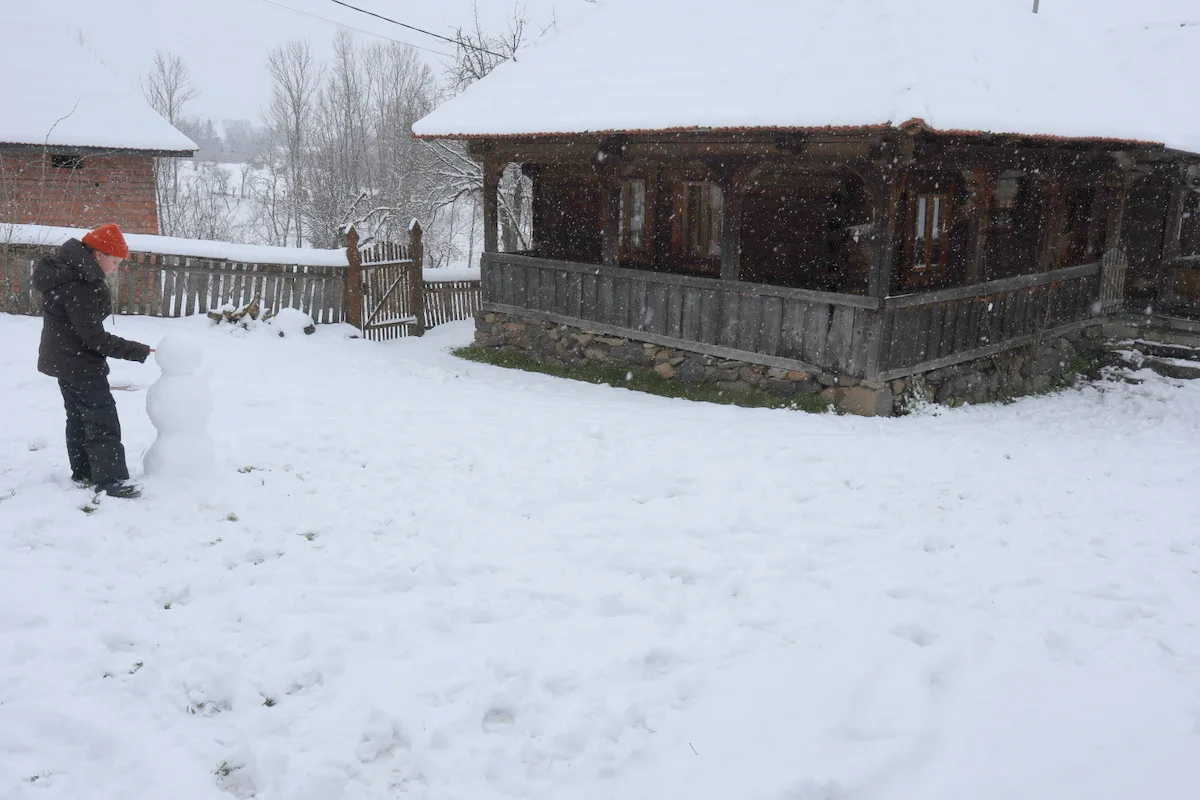
This year, nature gifted us with about a foot of snow on Easter weekend.
In the past, we’ve had late snows, even in May but none of them ever lasted a week, hardly ever more than a day. Wasn’t it a surprise to us, then, that April was colder than March?!
I can’t stress enough to gardeners that nature is always right – even if it doesn’t fit in with your timeline. If the soil temperatures are too cold and the ground is too wet, your seeds will rot. If they do emerge and face a belated frost, well, you are taking your chances.
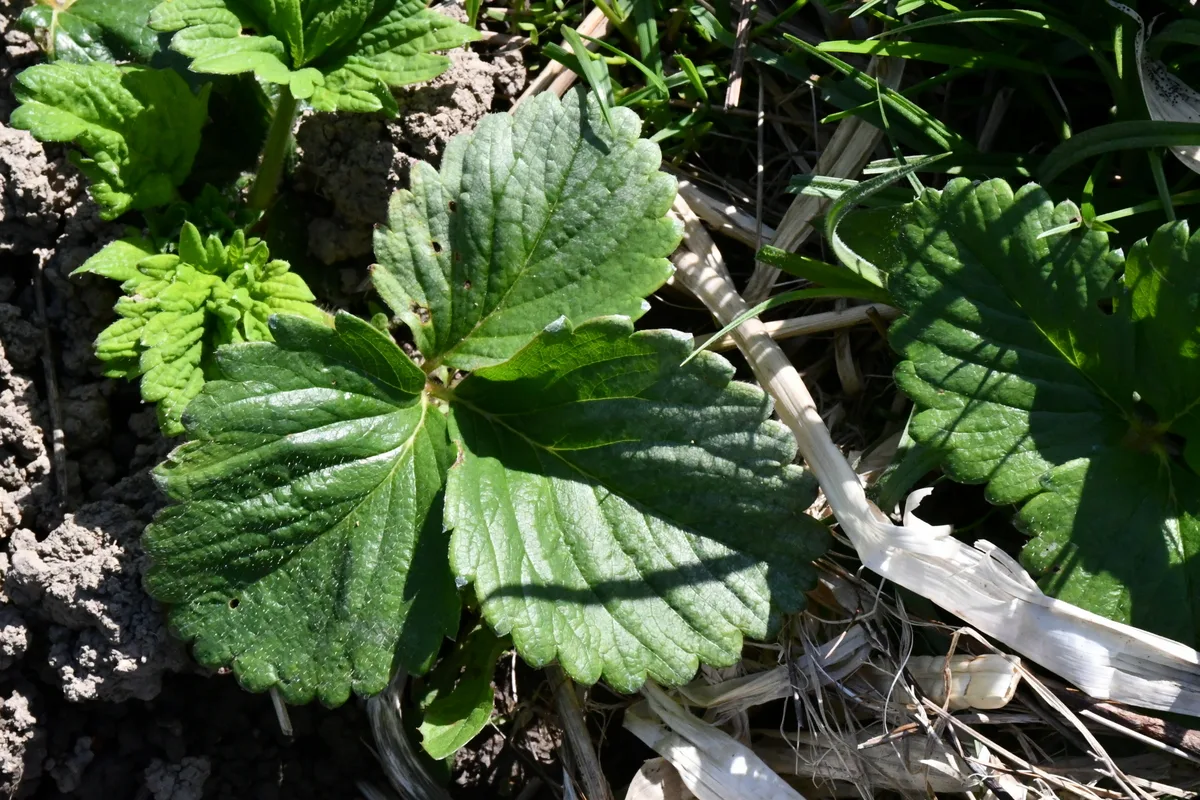
Most of us are risk takers to some extent, however, food production shouldn’t be taken too lightly. After all, you do want to help feed your family and friends, right?
Until air and soil temperatures have stabilized, your best bet is to work on something else, like starting seeds indoors. But not too early either! In general, as with any garden, it’s wise to round-about know when the last expected frost date is. Then start preparing from there.
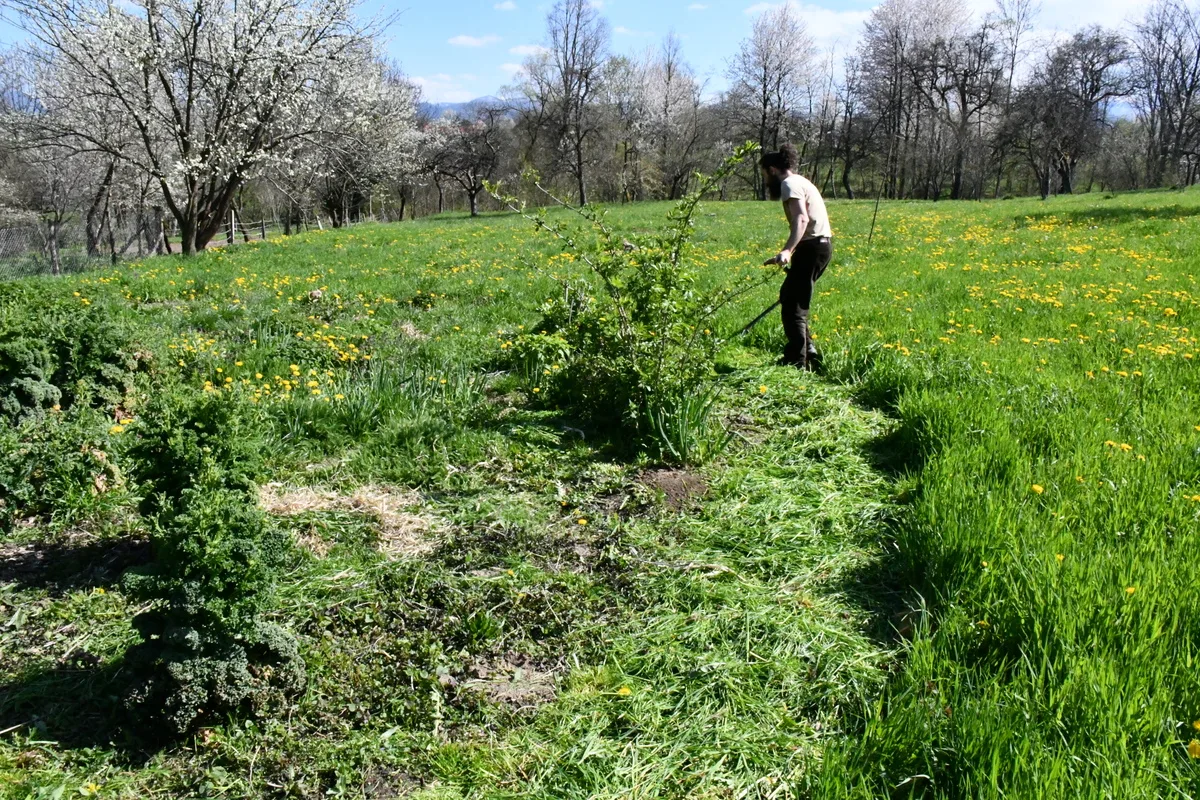
Use that green grass as a mulch in your garden.
2. Sow Seeds Indoors
Now, this may, or may not be, something you are capable of and/or willing to do. If you are thinking in terms of a survival garden, sure you’d want to employ every tactic that will help to ensure a large harvest.
In all our years of gardening, my husband and I have never taken this route, simply because our wooden house isn’t warm enough, nor sunny enough for starting seeds.
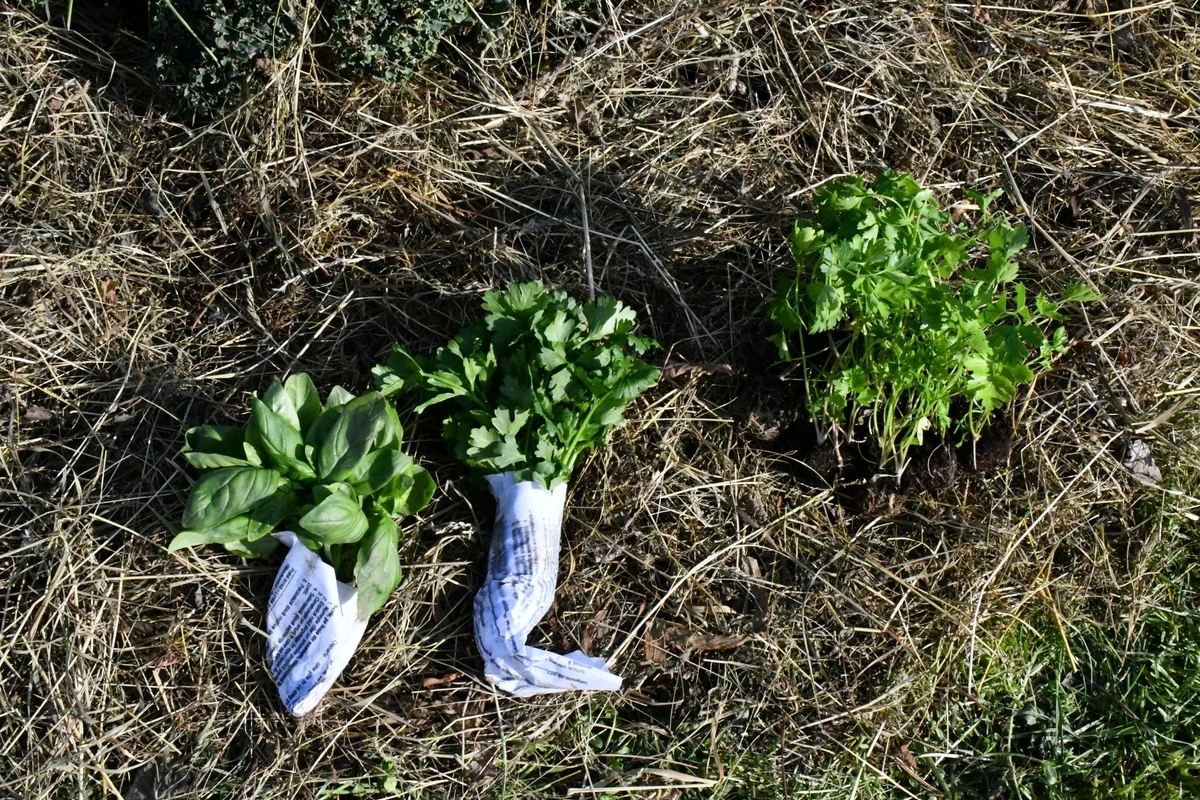
Instead, we practice self-reliance and head to the market to purchase starter plants from local gardeners when it comes time to fill in gaps in the garden. Sure it costs more money, but in a shorter gardening season it saves us precious time and a lot of hassle.
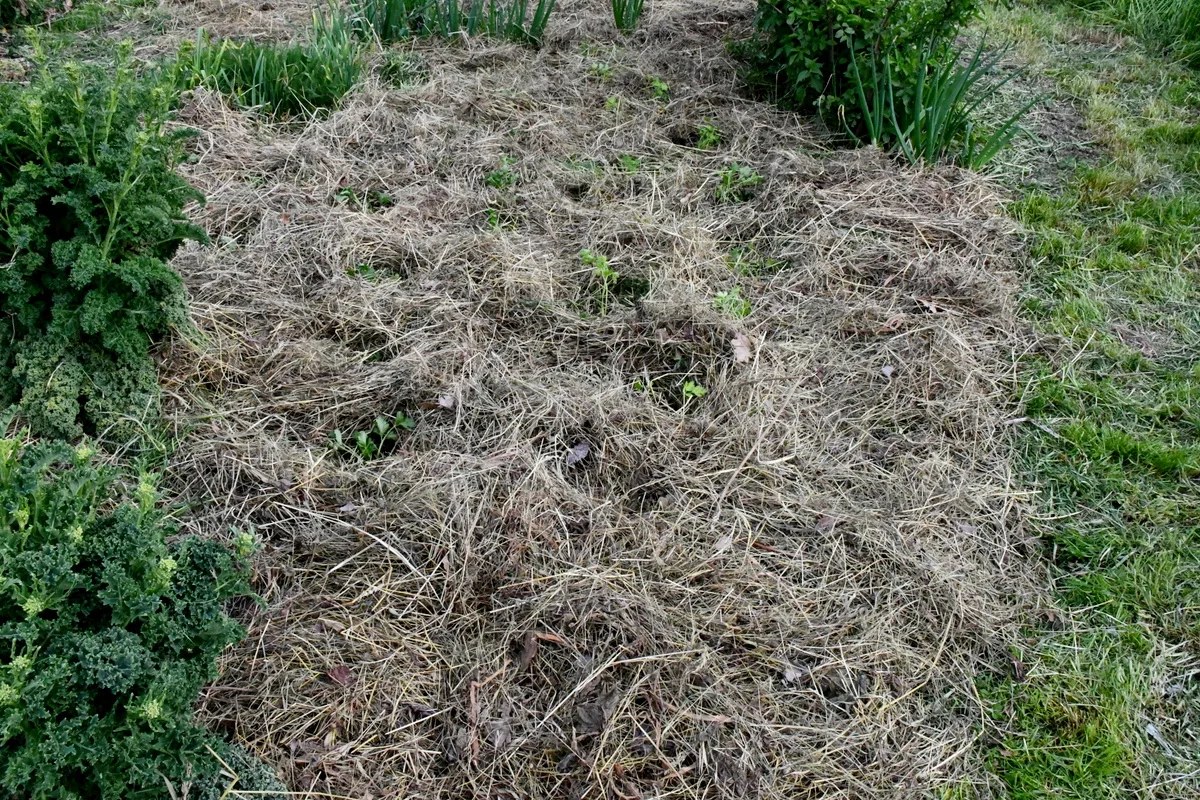
The more time you spend gardening, you’ll realize it’s all about priorities.
And with the right space, starting your seeds indoors can be a real time and money saver. If that’s what you are after, by all means, grab those trays, fill them with potting soil and sow away.
Again, just make sure your timing is right. Read the back of the seed packages to find out how many days to germination, then allow even more time for them to become hardy enough to transplant outdoors.
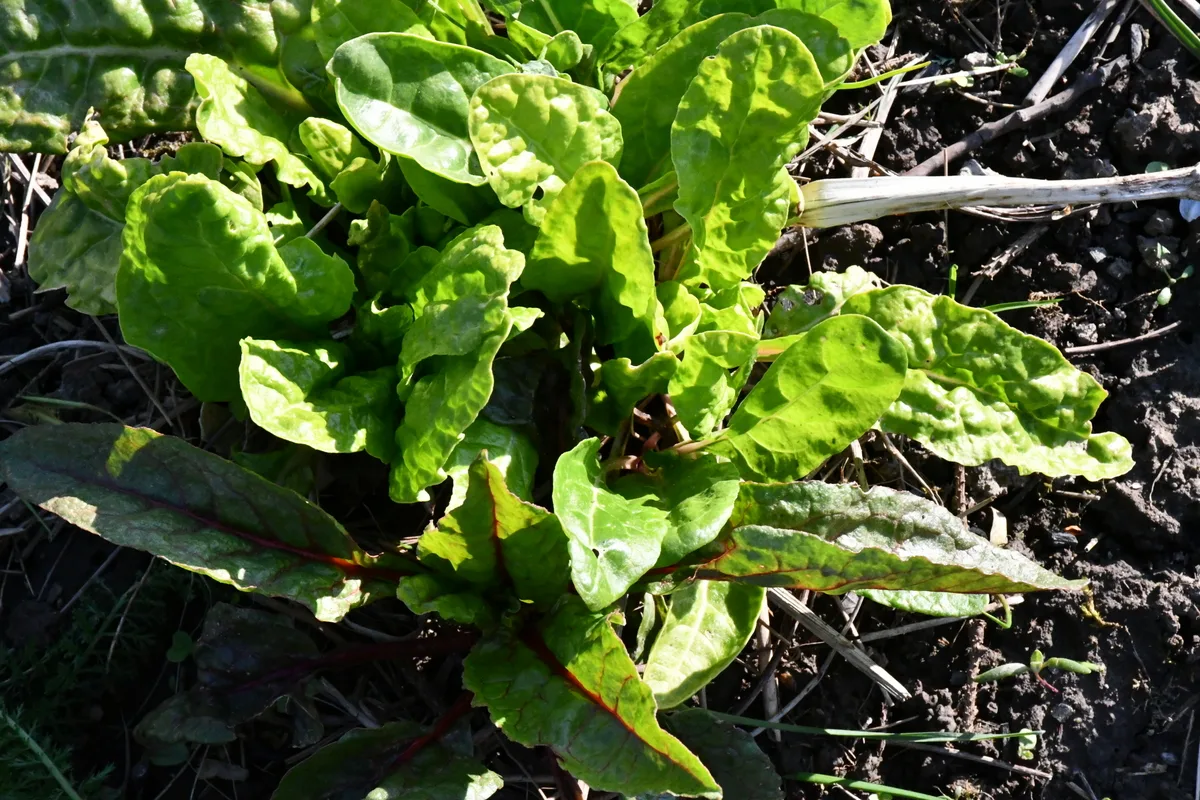
It acts as a fantastic self-seeding perennial in our no-dig garden.
3. Take Care of Biennials
Since this isn’t your first no-dig gardening season, chances are good that you’ve left some biennials in the ground that are ready to flower and go to seed.
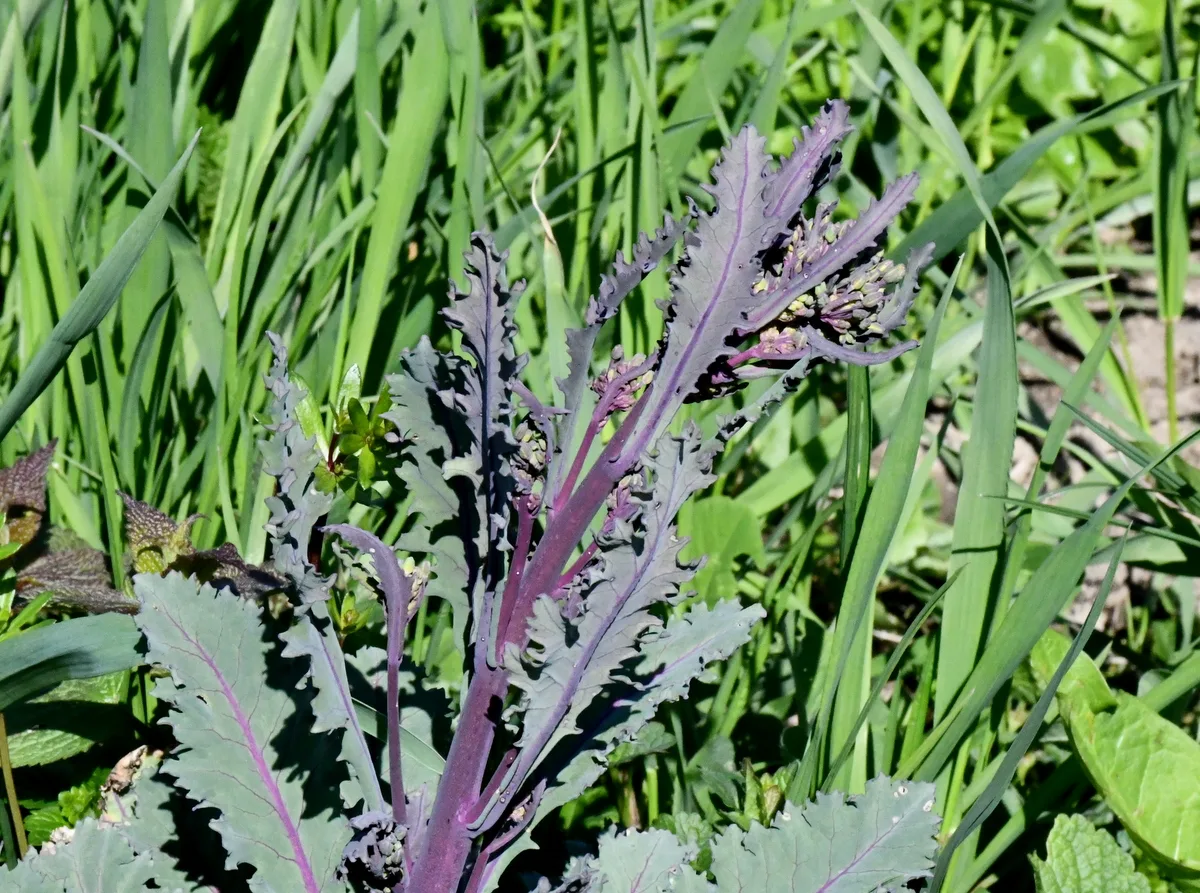
This past season we left a few plants in the ground of varieties we’d really like to save seeds from:
- kohlrabi
- kale
- cabbage
- beets
- chard
You probably noticed that they’re all cruciferous. It’s good to have a variety of them in the garden at any given time of the year.
We also have a few random parsley roots and carrots that got skipped over in harvest. They’ll have the chance to bloom and go to seed too. Here’s where priorities come into play: if saving seeds is important to you, having a no-dig garden will make it easy for you to do so, year after year.
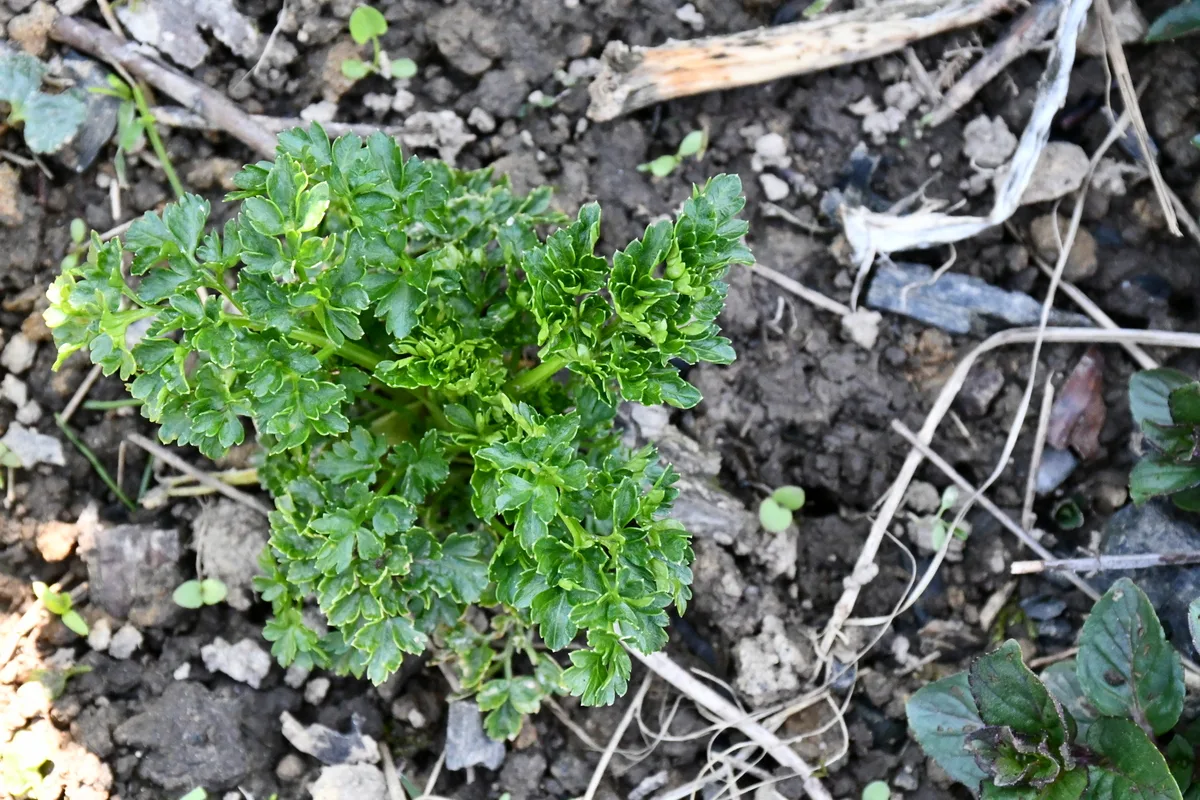
If I might add, one of the best parts about having a no-dig garden is that there is a continuity of leaving plants in the soil to survive the winter.
This ensures a quick crop of greens in spring, as well as the opportunity to have a more permanent garden. One that also honors perennials which like to stay put in the same location for years in a row.
4. Nurture the Perennials
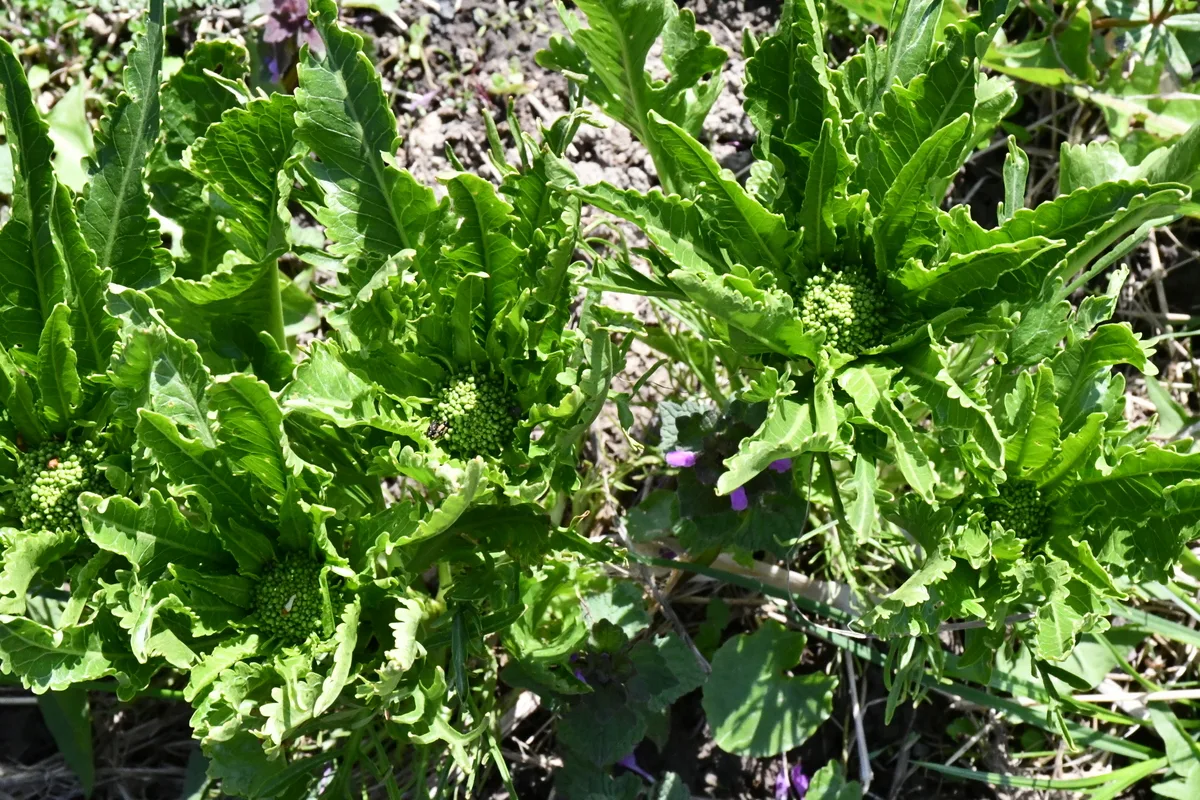
Spring is a time for nurturing those perennial vegetables in the garden.
You do have some, don’t you?
Take a quick scroll through the following list and see what perennials catch your eye:
- rhubarb
- chives
- sorrel
- asparagus
- horseradish
- lemon balm
- garlic
- mint/spearmint
- kale
- lovage
- strawberries
- dandelions
- purple dead nettle
- stinging nettle
Naturally, there are more than this, though I’d never recommend you to grow anything in your garden that you are unwilling to eat. Especially when it’s going to come up reliably year after year.
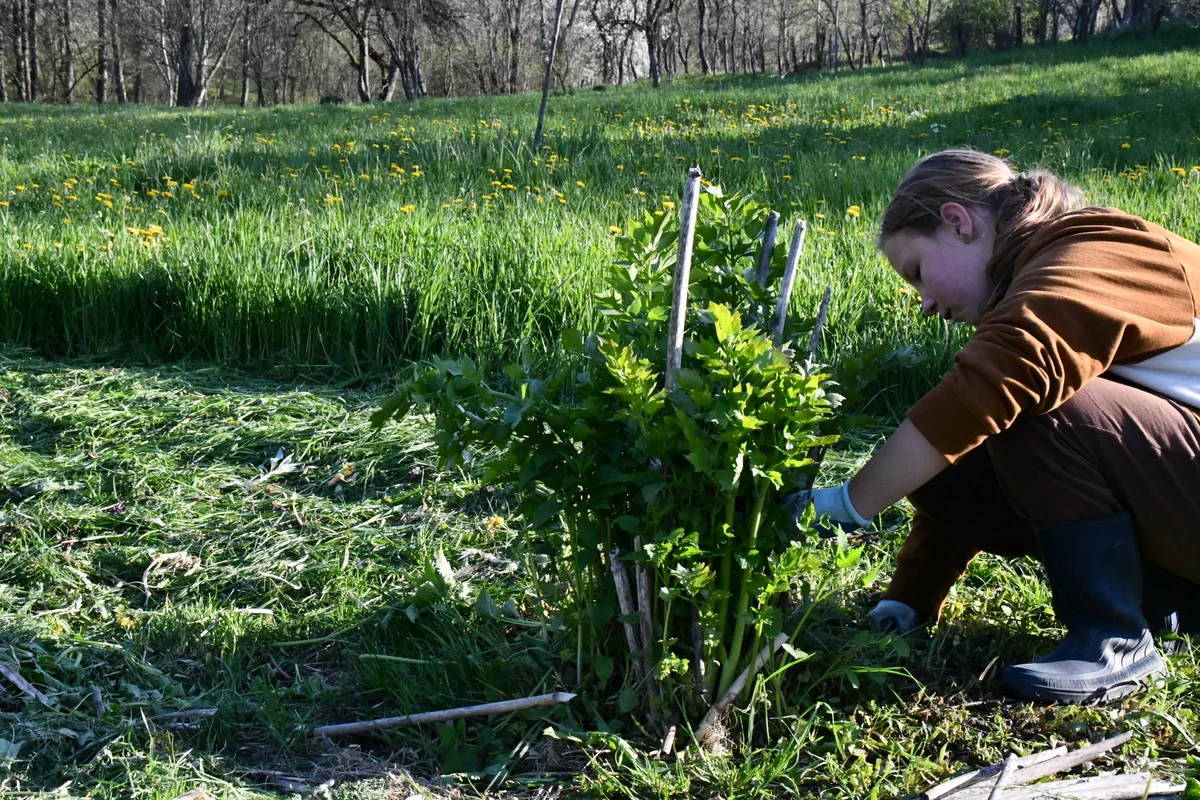
For now, prune back the dry parts of any perennials in your garden and make sure to mulch around their base. If they are overgrown, take the time now to divide them.
If you find yourself having a lot of perennials, it may be a good time to thin some out and give as no-dig garden starter plants to family and friends.
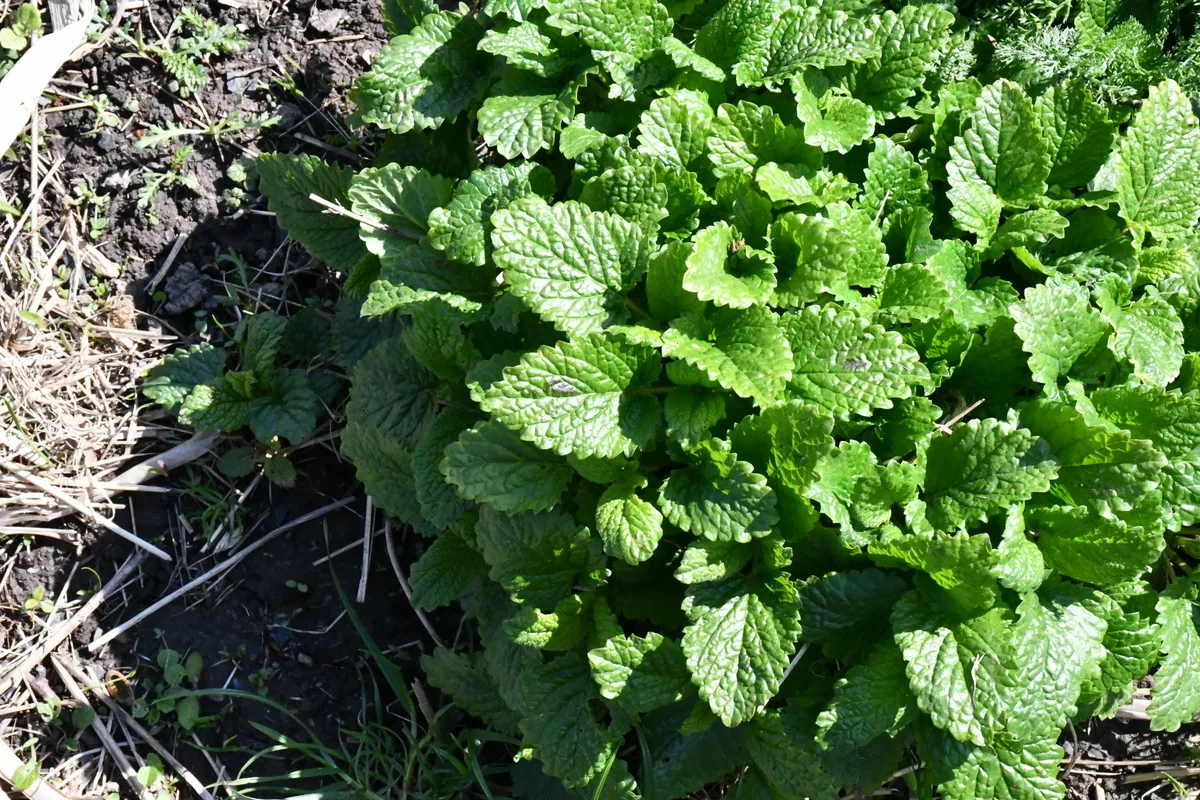
5. Transplant Bunching Onions
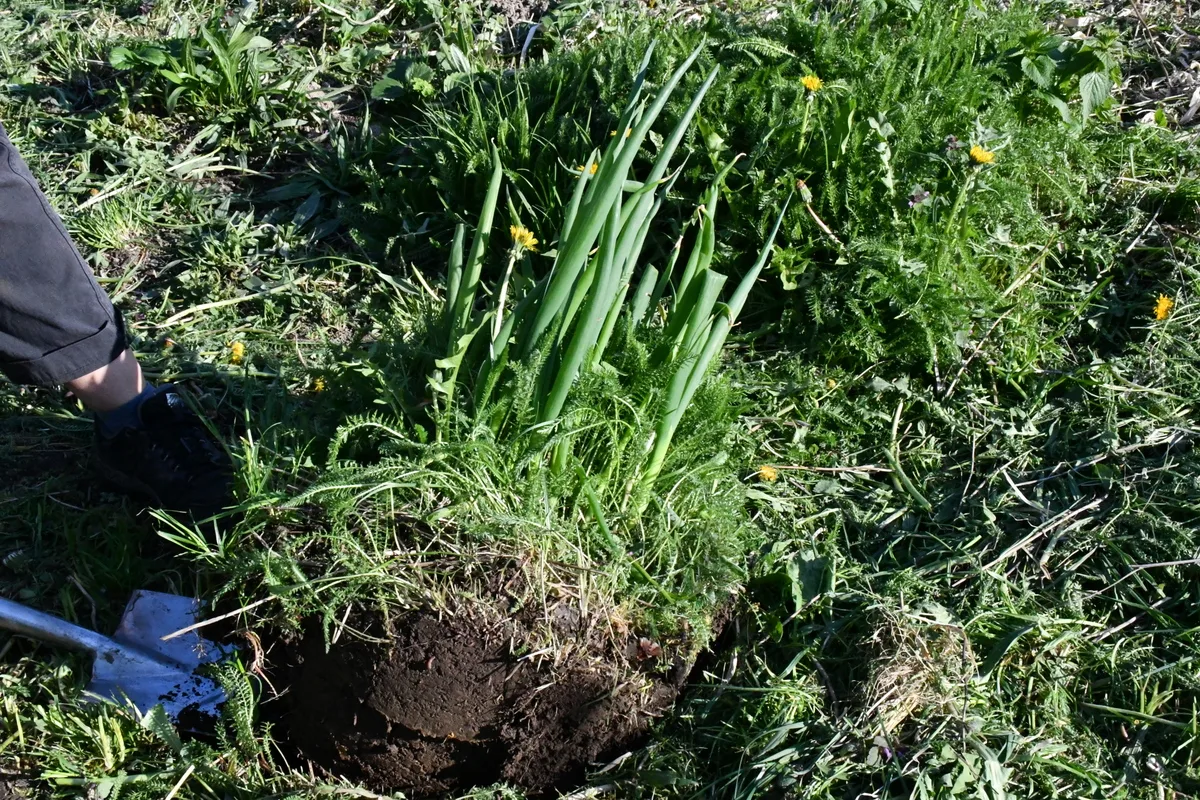
Every three or four years is enough time to transplant your bunching onions. To do so, lift the entire bunch up with a spade and divide it into multiple segments.
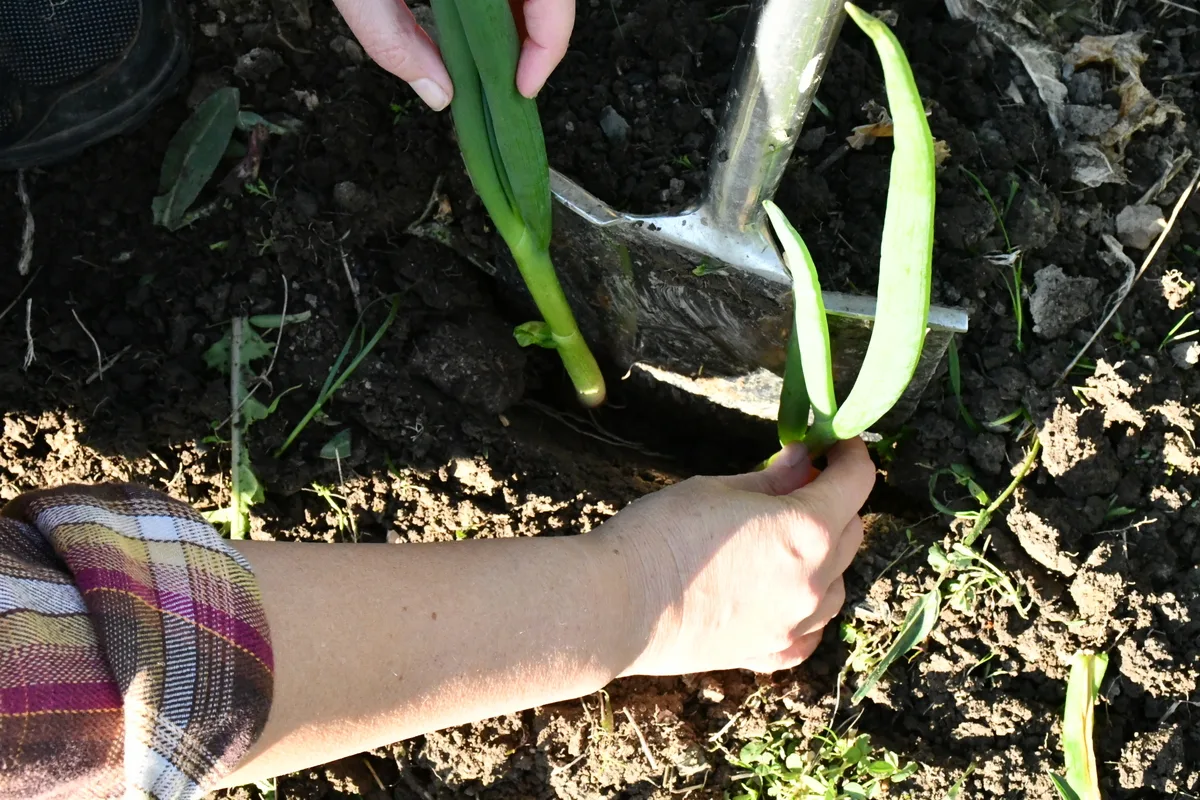
Place them back in the soil, preferably in another part of the garden, then add some mulch.
You can also do this with chives if they have become overgrown.
6. Weed and Eat Your Weeds
Over the years we’ve gone from heavily mulching our no-dig garden in fall, to not mulching at all until spring. To be honest, this can result in a lot of spring greens. Never fear, they are more often than not easy to pull out and lay on the soil. Free compost at its best.
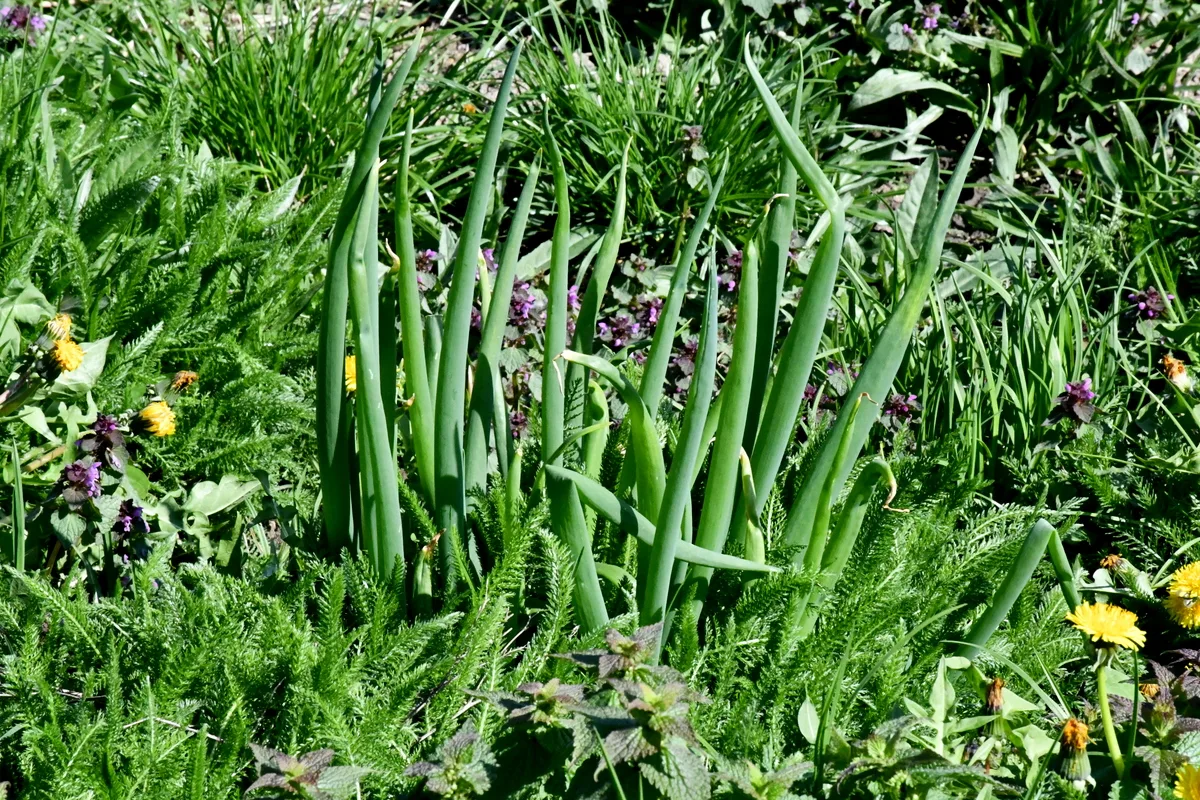
The reason for this was a lot of spring time rains and moldy mulch from winter snows. Plus, it took the soil a long time to warm up when it was covered, which really slowed down the start to the gardening season. And the neighbors’ chickens come up the hill to visit in February, March and April to fluff up the soil a little, leaving a small amount of manure behind. It’s been a win-win situation for us to leave it uncovered over the winter months.
However, that being said: leaving the soil uncovered comes with the emergence of weeds.
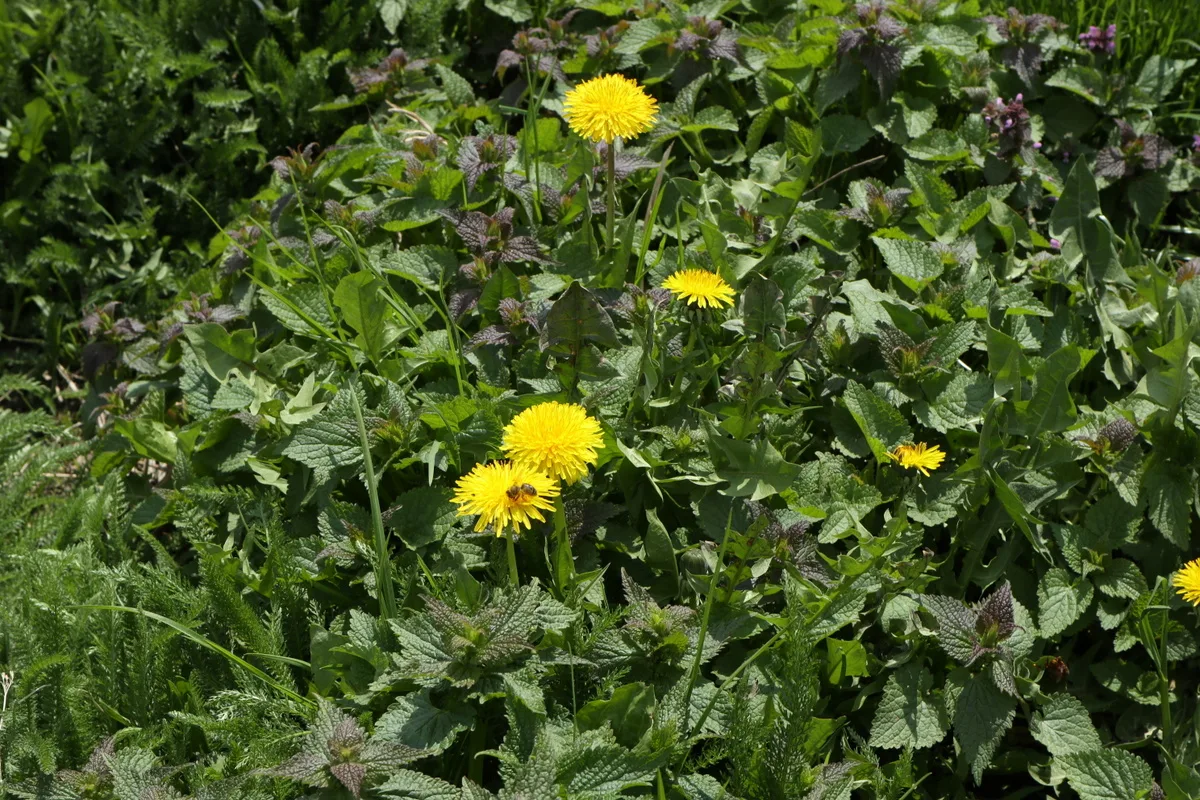
There are lots of wild edibles to be found in a no-dig garden.
Again, we have a winning situation here, simply because we eat weeds!
Now, there isn’t any goosefoot yet for salads. But there are dandelions aplenty. Not only are the leaves edible, the flowers (think delicious dandelion flower fritters) and roots are too.
Sure the bees are using some of them as well, but our unmown yard is big enough to share. Everybody and everything finds something to eat in our garden, from nettle to purple dead nettle, from plantain to chickweed and bunches of fresh yarrow for salads and teas.
For the most part, our garden is full of edible weeds in spring.
A few other stragglers pop in here and there, yet they are easy enough to rip up by hand and toss onto the compost pile at this time of year.
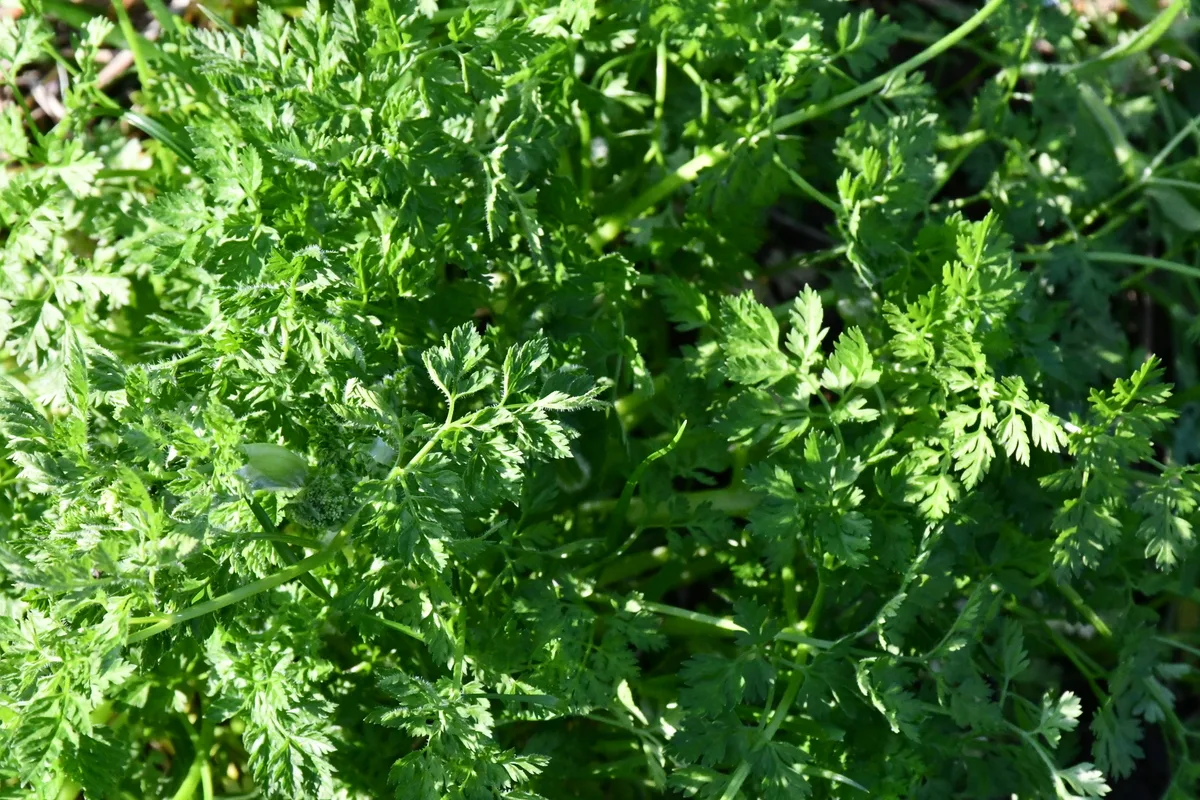
This is chervil (which we planted last year), not to be confused with poison hemlock.
As the days lead up to the actual planting of the garden, we harvest all the foraged greens we need on a daily basis, no going to the store for fresh, nutritious greens. Then the rest will be pulled up where we wish to plant annuals, left to wilt on the ground (which adds nutrients back to the soil) and be covered by mulch.
7. Mulch Your No-dig Garden in Spring
Most people who are new to no-dig gardening might assume plant first, mulch later. When in fact, it is usually quite the opposite.
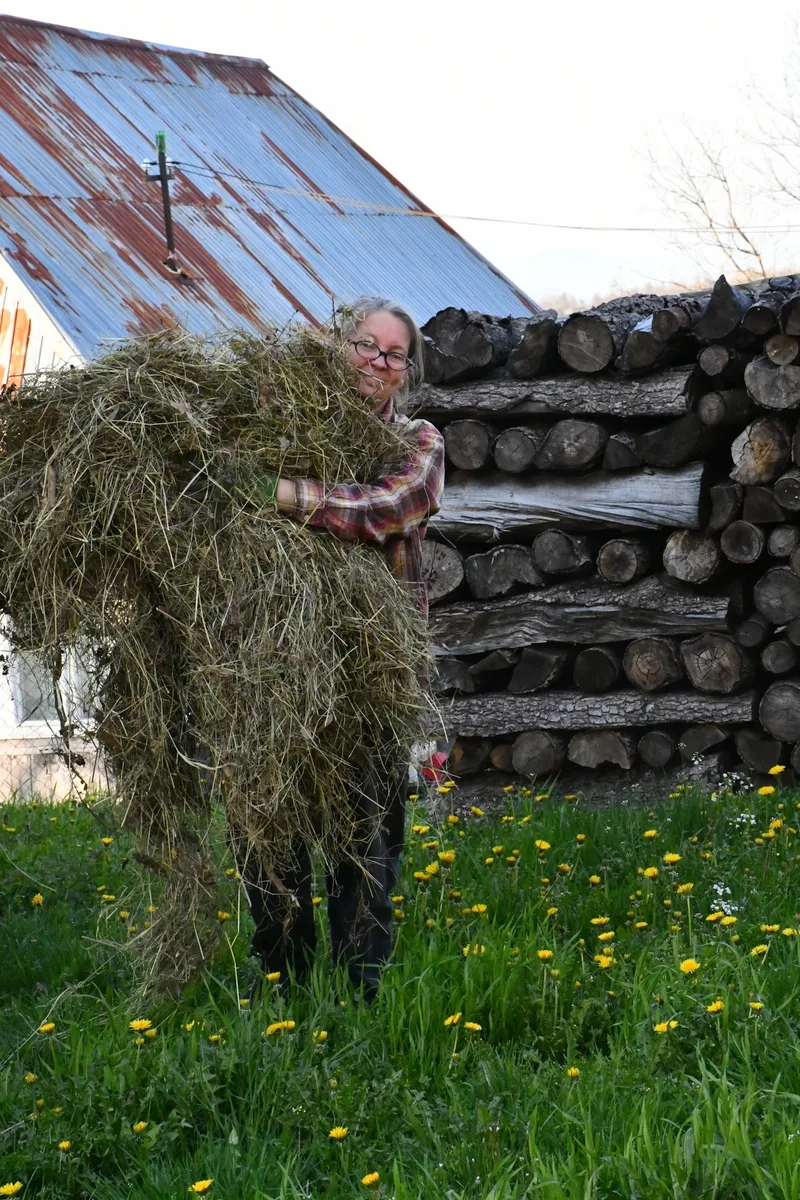
When the entire garden plot is mulched, you’ll get a good idea of how much space you can allot to each vegetable and/or herb.
Mulching for us is generally done with hay, which is grown right in our yard. There is contradictory advice about using hay in a no-dig garden, though as long as the hay is clean and harvested before the grass goes to seed, there is little problem with using it. Bottom line, use what you have, what is grown locally. Gardening shouldn’t have to be a lot of hard work, or cost a lot of money.
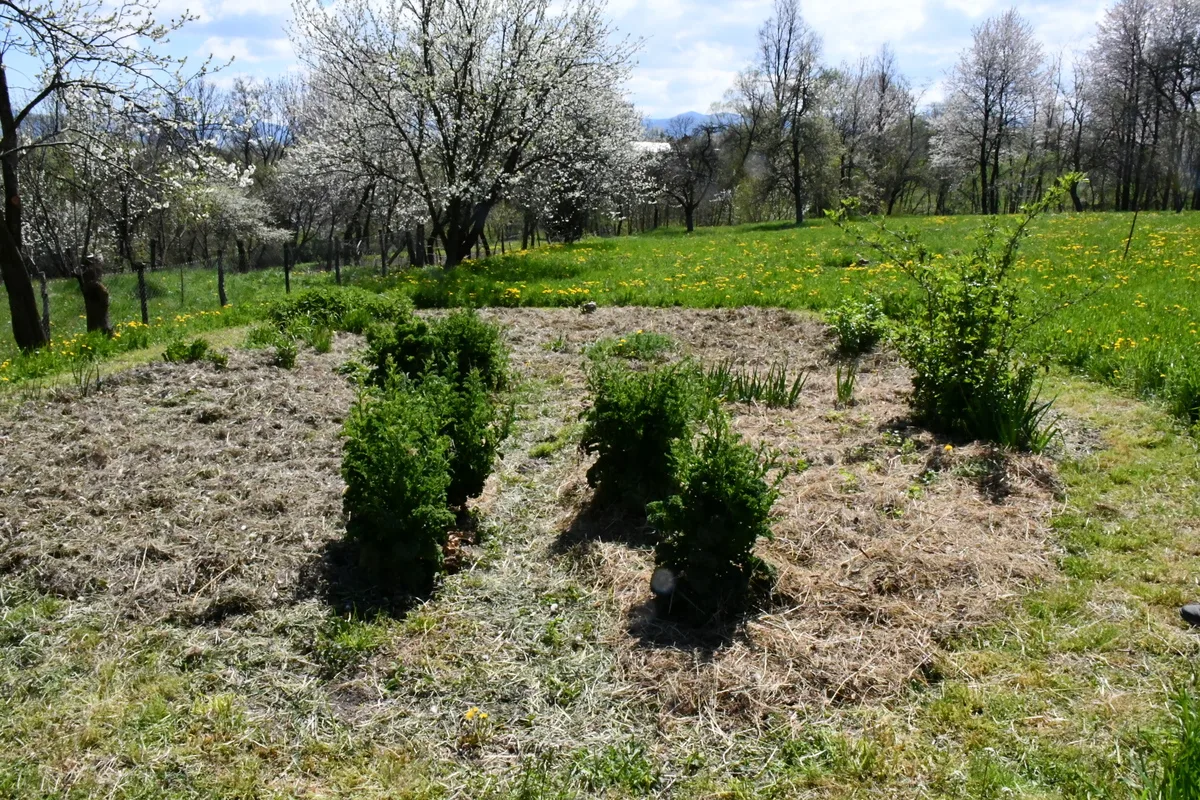
We’ve already eaten from them several times, including the multiple flowering tops.
As long as you can keep it organic, you’re going to find a lot better nutrition in your backyard, almost for free, than you could ever buy at the store.
8. Sow Seeds in Your No-Dig Garden
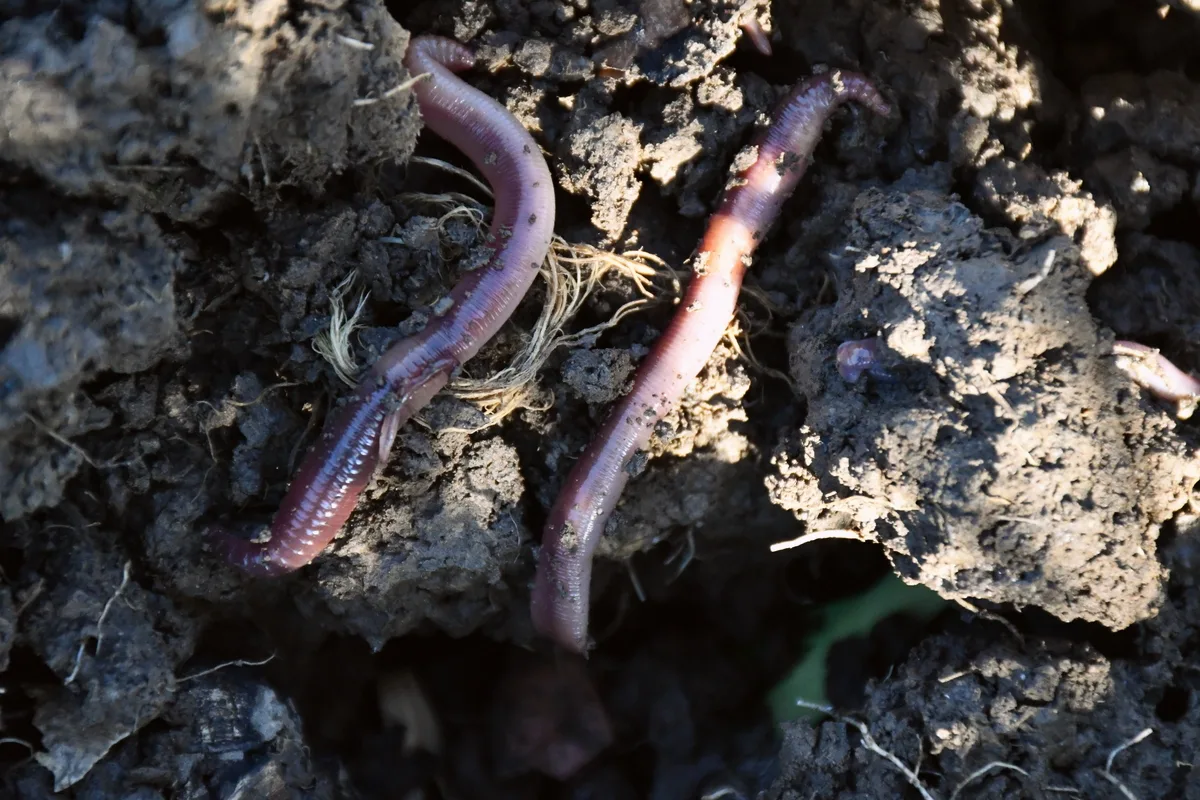
With more than a decade of no-dig gardening behind us, these are the 20 vegetables we grow each year without fail. Okay, tomatoes are the exception here, it generally doesn’t get hot enough in the mountains to make growing them worthwhile. In that case, the local market comes in handy once again, because we do go through at least 30 jars of home-canned tomato juice a year.
When the winter weather finally settles down, you can get most of your garden planted in a weekend, depending on the size and how many hands you can get to help.
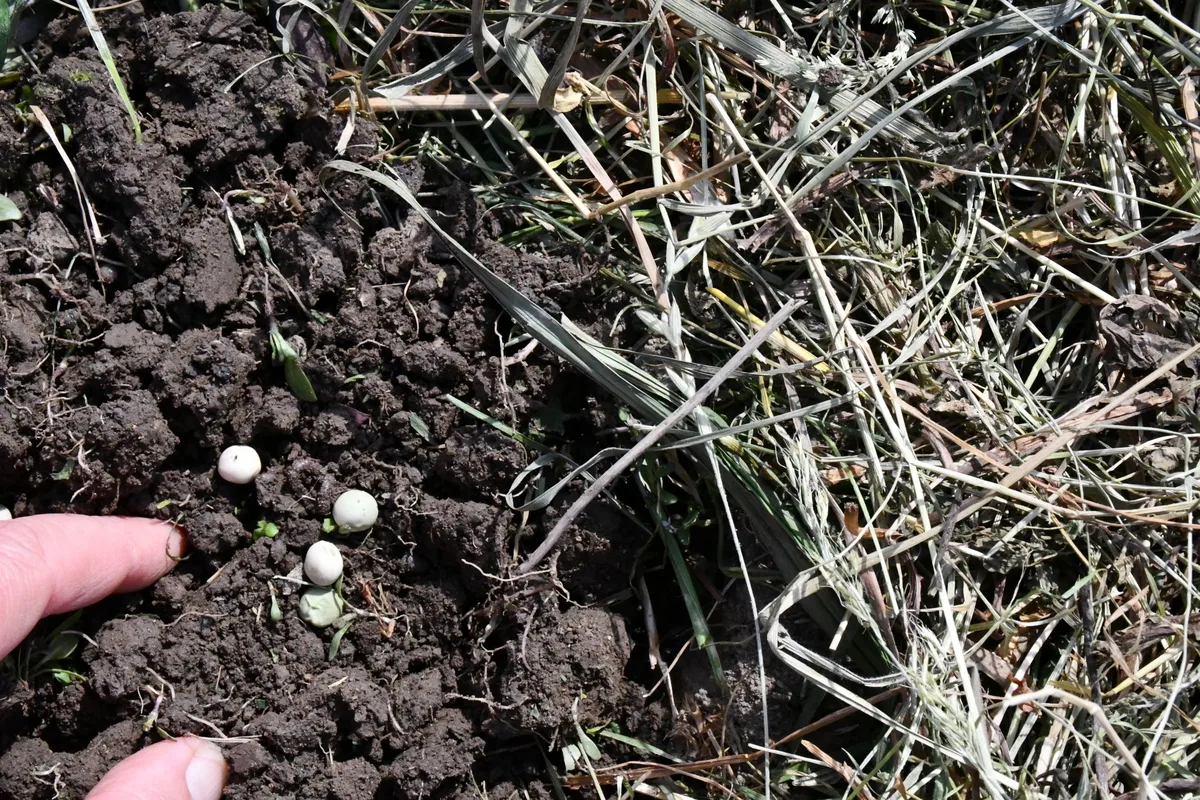
Here peas and dill are planted together.
Planting in a no-dig garden is easy enough. For smaller seeds, pull back the mulch and gently scratch the soil, or leave the seeds right on top of the ground, then cover with a thinner layer of mulch. This method works great for pumpkins, squashes, cabbages, radishes and most other, smaller seeds.
Corn and beans are best planted with a drill, or an L-shaped planting stick.
Related reading:
7 Things Everyone With A No-Dig Garden Needs To Know
12 Common Mistakes That No-Dig Gardeners Make
That’s about all the advice and inspiration you need for not digging your garden.
All that’s left is to decide when and where everything goes, then get to planting it, whether it be all at once, or with some plants in succession: such as radishes, spinach, rocket or lettuce.
Be sure to save a few weeds along the way, for eating and for drinking a nourishing spring tonic.

Get the famous Rural Sprout newsletter delivered to your inbox.
Including Sunday musings from our editor, Tracey, as well as “What’s Up Wednesday” our roundup of what’s in season and new article updates and alerts.

